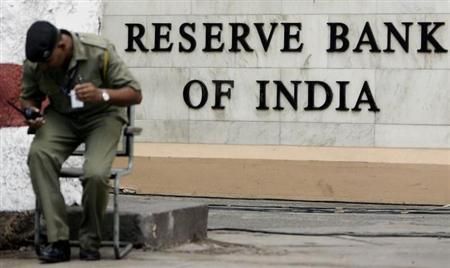 | « Back to article | Print this article |

Banks to compute lending rates under new rules
To force lenders effectively pass on policy rate cuts, the Reserve Bank of India on Thursday said from April 1, 2016, banks must review their lending rates frequently, and reflect changes in their cost of borrowing.
But customers taking loans at any given point cannot reset the terms before a specified period agreed upon at the time of the contract, usually a quarter or a year.
The new lending rates, named Marginal Cost of Funds-based Lending Rate, will be computed based on banks’ marginal cost of borrowing, or incremental cost of funds, rather than the average cost of funds that banks have used so far.
This means, that if a bank’s cost of borrowing is eight per cent now but tomorrow the incremental cost of funds becomes 7.5 per cent, the marginal cost of borrowing for the computation purpose will be 7.5 per cent, rather than the average of the two.
The reason for introducing this system is to force banks to pass on rate benefits to customers.
Since January 2015, the central bank has lowered its policy rate by 125 basis points, but banks lowered their lending rates by only about 60 basis points.
On the other hand, deposit rates have been slashed by more than 100 basis points, indicating that the incremental cost of funds has actually fallen more than what banks have passed on to their customers.
Bankers said the new norms will soften the blow on balance sheets since old loans would get repriced over period.
Welcoming the new norms for loan pricing, Arundhati Bhattacharya, chairman, State Bank of India, said sufficient time has been given to banks to switch over to the new regime of Marginal Cost of Funds-based Lending Rate as it becomes effective from April 1, 2016.
“With marginal cost of funds including tenure premium we have moved closer to international manner of benchmark rates,” she added.
“While these guidelines will benefit the new customers, existing customers will also have an option to shift to the new regime with some conditions,” she also said.
Existing borrowers can move to MCLR regime on mutually agreed terms. Such transition will not be treated as a foreclosure of existing loans.
From April the effect of the new regime would begin to be felt in cash credit and bill-discounting, both of which have short tenure and home loans.
“Together these constitute 50-60 per cent of bank loan books,” Vibha Batra, co-head, financial sector rating, ICRA, said.
With the MCLR regime in place, a fall in deposit rates will be quickly reflected in the fall of lending rates.
Similarly, when the deposit rates rise, lending rates will go up quickly too.
To arrive at the final lending rate, a couple of expenses will be added to the cost of funds and then a spread, depending on the risk profile of the customer, will determine the final lending rate.
A tenure premium, operating costs and a negative carry on account of cash reserve ratio would be added.
The spread above this should be board approved and should remain fixed unless the risk profile of the borrower deteriorates.
“Actual lending rates will be determined by adding the components of spread to the MCLR.
Accordingly, there will be no lending below the MCLR of a particular maturity for all loans linked to that benchmark,” the Reserve Bank of India said in its guidelines on MCLR.
Banks will have to publish at least five MCLRs -- overnight, one month, three months, six months and a year.
They can also publish MCLRs of any longer maturity.
Banks will be required to review and publish their MCLR of different maturities every month on a pre-announced date.
However, the MCLR “prevailing on the day the loan is sanctioned will be applicable till the next reset date, irrespective of the changes in the benchmark during the interim,” the central bank said, adding the periodicity of reset shall be one year or lower, or as agreed as per the terms of the loan contract.
This means even as the bank’s MCLR changes in between, a customer cannot change the interest rate before the reset date.
Ananda Bhoumik, managing director and chief analytical officer, India Ratings said, “
The new rules will drive banks hard to match tenure (assets and funds) for protecting margins.
Over a period of time, reset may become frequent. However, more clarity was needed in the rules for benefit of implementing them.”
Existing loans and credit limits linked to the base rate would continue till repayment or renewal, and banks will have to continue to review and publish base rate.
But existing borrowers will have the option to move to the new MCLR linked loan, without being treated as a foreclosure of existing facility.
This methodology of pricing base rates will be beneficial to borrowers in a falling interest rate scenario.
But when interest rates go up, then the increase in rates also will be passed on to borrowers very fast, said S K V Srinivasan, executive director, IDBI bank.
ADVANTAGE BORROWERS
From April 1, 2016, all banks will have to follow a new interest rate regime -- Marginal Cost of Funds-based Lending Rate
RBI diktat: The new lending rates would be computed on banks’ marginal cost of borrowing, or incremental cost of funds, rather than average cost of funds used now
Customers’ gain: New borrowers will benefit from this immediately; old borrowers will be able to move to this rate on mutually agreeable terms